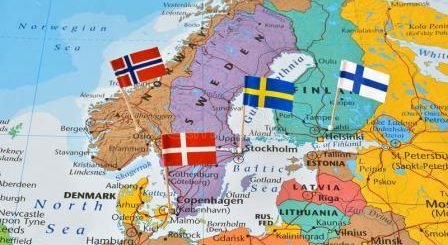Interview: India-Seychelles Strategic Relations by Maj. Gen. Rajiv Narayanan

Former ADGMO Indian Armed Forces, Maj. Gen. Rajiv Narayanan, AVSM, VSM speaks to The Kootneeti Editor Prerna Sanjay about Seychelles’ strategic importance to India as it lies close to global lanes of shipping and commerce and is an important base in the fight against seaborne terrorism and piracy in the Indian Ocean Region.
What is the strategic significance of Seychelles to India, especially to India’s ambitions in IOR?
It facilitates India’s outreach towards Western IOR. The Assumption Island permits effective outreach over the entire East Coast of Africa. This supplements well with India’s proposed multilateral regional architecture for security in the IOR.
In your opinion, why is the planned naval base at the Assumption Island so important in strategic perspectives?
With Madagascar, Mauritius and Seychelles to the West, Andaman & Nicobar Islands and Sabang (Indonesia) to the East, and Diego Garcia & BIOT (as part of QUAD) in the middle, India’s outreach for a regional multilateral security architecture in the IOR would be strengthened.
India has a very close security relationship with Seychelles, from training to equipment, and the Assumption Island project is facing hurdles since its signing. In your opinion what will be the future of the project? How should India react next?
Despite hiccups, the project is likely to be on track. However, India should learn from the Chinese the use of ‘soft power’ to project a positive perception of India amongst the population and the political system.
How you think a $100 million line of credit and Dornier maritime patrol aircraft will help boosting India-Seychelles ties. China donated two Y-12 aircraft for surveillance of Seychelles’ in 2010-11. Do you think India should’ve aided Seychelles in more substantial way ahead of the Assumption island cooperation proposal?
Little goes a long way. India-Seychelles ties are not beholden to how much or what China provides. The line of credit, the Dornier aircraft and the facility at Assumption Island would assist Seychelles in protecting itself from external and non-state threats. Aid should be commensurate with the ability of the country to absorb and its capacity to repay. As such, a step-by-step approach would be beneficial to both countries.
What is your opinion on the present government’s foreign policy, especially towards IOR and countering China’s assertiveness?
The present Government is building upon the earlier policy of ‘Look East’ and moving further with ‘Act East’. The BIMSTEC is one such forum that has been further strengthened, as also the IORA and IONS. These are building blocks and results accrue over time. The outreach to Seychelles and Indonesia and the QUAD are the steps towards India’s vision of shared prosperity and security in the IOR (and Indo-Pacific).
We are well aware of China’s “string of pearls” agenda to encircle India in the IOR, to that, how should we react?
The ‘String of Pearls’ theory is an American construct (Booz Allen Hamilton, 2005) on Chinese outreach in the IOR. This can also be viewed as a natural corollary to China’s rise in the region. This step by China is viewed with concern as it is seen as a ‘revanchist and a revisionist’ power that wants to undo the extant International norms and set up its own rules. India is also expanding its reach within the region, small hiccups notwithstanding. India is welcomed as it is viewed as a benign power. India aims to be part of a multilateral regional economic and security architecture in the IOR (and the Indo-Pacific).
India and Seychelles enjoy a unique defence relationship. Seychelles is of strategic importance to India as it lies close to global lanes of shipping and commerce and is an important base in the fight against seaborne terrorism and piracy in the Indian Ocean Region. Have both countries attained the true potential when it comes to bilateral relations?
In International Relations there are no permanent enemies or allies; what is permanent are the ‘National Interests’. As long as the interests coincide the friendship remains and is built upon, as in the case of India and Seychelles. Seychelles is also witnessing to the deleterious effects China’s economic assistance in the region, viz., Sri Lanka, Myanmar, Pakistan and now the Maldives. Seychelles and India’s relations are sound and likely to remain so for a long time.
Seychelles president Danny Faure visited India recently; he held talks with Prime Minister Narendra Modi. What are the key takeaways from the visit? In what way the meet will enhance the bilateral ties?
The agreement on Assumption Island would continue, keeping each other’s sensitivities in mind – one of the major takeaways. Apart from that the broadening of the relationship to cover Small Development Projects, Education, Vocational Training, Cyber Safety, White Shipping Information Exchange, Training of Diplomats over and above the Defence and Security augurs well for the future. This permits the relationship to grow in multi-dimensions.

*Maj Gen Rajiv Narayanan, AVSM, VSM, retired after 37 years of distinguished service, as the ADGMO (B) in 2016, having been closely involved with Future Strategy, Force Structures and Force Modernisation.
The views and opinions expressed here are those of the authors and do not necessarily reflect the views of The Kootneeti Team.



















